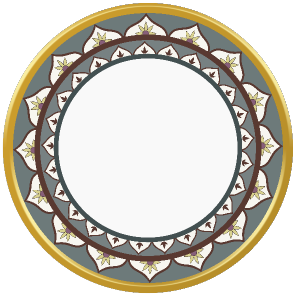A Glimpse Of The Indian History During The Rule Of Khalji Dynasty
Khalji dynasty (also known as Khilji dynasty) was a Muslim dynasty that was ruling large parts India from 1290 to 1320. It was founded by Jalaluddin Firuz Khalji. The Khilji dynasty is best known for their faithlessness and ferocity, conquests into the Hindu south, and for successfully fending off the repeated
Mongol invasions of India.
The Khaljis were of Turko-Afghan origin. They were a Turkic people, who had long been settled in Afghanistan and had lived in the Helmand and Lamghan regions for over 200 years before moving to Delhi. The downfall of the Slave Dynasty paved the way for the uprising of the Khilji Dynasty.
Jalaluddin Khalji
Jalaluddin Firuz Khalji was around 70 years old at the time of his ascension. He was known as a mild-mannered, humble and kind monarch to the general public. He succeeded in overcoming the opposition of the Turkish nobles and ascended the throne of Delhi in January 1290 but to his dismay, he was not universally accepted. His short period of the ruling came to an end with his murder by his nephew Alauddin Khilji.

Image Courtesy: coinindia.com Coins during those times
Alauddin Khilji
Alauddin Khilji was the first Sultan of the Delhi Sultanate of India to conquer both north and south of India. Alauddin Khilji among the Khilji kings reigned the longest between 1296-1316CE. He was considered as an aggressive ruler.
He also was a successful Sultan in terms of expansion of his territory. To achieve this he followed an aggressive policy of territorial expansion and led important military campaigns such as Gujarat. Alauddin Khilji was the first Muslim ruler to send an expedition to the Deccan.
Alauddin’s market reforms
Historians such as Barani and Ibn Batuta indicated that Alauddin introduced certain measures to control the prices of necessary goods for the benefit of the public.
Military reforms
He maintained the vast empire by putting up a permanent standing army and didn’t allow nobles to maintain their own army. He used to recruit his army on his own and paid them well and also introduced the system of DAGH (branding of horses).
Revenue administration
He also increased the land revenue from one third to half of the produce and appointed
special revenue officers to collect taxes.

Ranveer Singh as Alauddin Khilji
Alauddin and the Nobility
In order to suppress the rebellions of nobles and relatives, Alauddin set up an effective spy system and prohibited the drinking of wine and social gatherings. Also, he didn’t let nobles to intermarry without his permission. He revised the taxation system in order to reduce the surpluses of the prosperous classes. The land grants, issued by him, did not make the new landholders owners of the land. Like this, he curtailed the power of nobles and was efficiently keeping them under his control.
You will be surprised if I tell you that
Alauddin Khilji was a great patron of art and learning. Alauddin patronized art and learning. Important developments were made in literature during his reign the famous Persian poet, Amir Khusro, lived in his court. Alauddin ordered the building of imposing monuments and structures. The ALAI DARWAZA added as an entrance door to Qutub Minar, is a beautiful specimen of Turkish architecture. He also built a Madarsa near the Qutub Minar. The other noteworthy monuments built by him are the palace of thousand pillars and Siri Fort in Delhi.
The last Khalji sultans
After the death of Alauddin Khalji in 1316 CE, the sultanate witnessed chaos, coup, and succession of assassinations. Malik Kafur was the slave-general of Alauddin Khilji, he appointed Alauddin's 6-year-old son Shihabuddin as a puppet monarch and made himself as regent. Later, Kafur was murdered by one of his own agents.
After this, Qutbuddin Mubarak Shah ascended to the throne. Alauddin's officers and governors were retained by Mubarak Shah during the first year of his reign which ensured a stable government.
After ruling for less than a short span of four years, in 1320, one of the generals of Mubarak Shah, Khusraw Khan, murdered him. Later, Amirs persuaded Ghazi Malik – who was still army commander in Punjab – to lead a coup. Ghazi Malik's army marched on Delhi, captured and beheaded Khusraw Khan. Upon becoming sultan, Ghazi Malik renamed himself Ghiyath al-Din Tughluq and became the first ruler of the Tughluq dynasty. And thus, Khilji Dynasty became a thing of past.
So it is quite rightly said that no empire is meant to last forever, no dynasty continues unbroken. Someday those who put their sweat and blood into turning their dreams into reality will be mere legends.

Delhi Sultanate during Khalji Dynasty
For more interesting articles, follow our online magazine
BananiVista. Do “Like” and “Follow” us on
Facebook.






 Image Courtesy: coinindia.com Coins during those times
Image Courtesy: coinindia.com Coins during those times
 Ranveer Singh as Alauddin Khilji
Ranveer Singh as Alauddin Khilji
 Delhi Sultanate during Khalji Dynasty
For more interesting articles, follow our online magazine BananiVista. Do “Like” and “Follow” us on Facebook.
Delhi Sultanate during Khalji Dynasty
For more interesting articles, follow our online magazine BananiVista. Do “Like” and “Follow” us on Facebook.